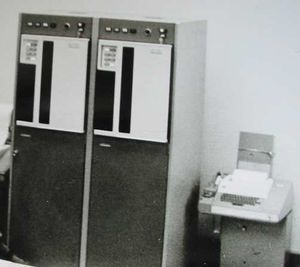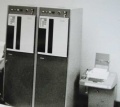Category:Multiplexing
From ETHW
The combining of two or more signals into a single wave from which the signals can be individually recovered. Examples include time division multiplexing and frequency division multiplexing
Subcategories
- Code division multiplexing - the use of codes to combine multiple communications signals into a single signal over a single line and to divide them for further transmission, as opposed to frequency division multiplexing
- Demultiplexing - a method used to extract multiple signals from a single line to be transmitted to receivers
- Frequency division multiplexing - or FDM, a form of signal multiplexing that involves assigning non-overlapping frequency ranges to different signals
- Multiplexing equipment - equipment that can combine or divide multiple signals for transmittal
- OFDM - orthogonal frequency-division multiplexing, the use, by a single transmitter, of a set of frequency multiplexed signals with the exact minimal amount of frequency spacing to prevent interference
- Time division multiplexing - or TDM, a type of digital multiplexing in which two or more streams of information are transmitted at what seems to be the same moment, but that take turns on that channel
- Wavelength division multiplexing - or WDM, a technique which multiplexes numerous signals onto an fiber-optic wire using different wavelengths (colors) of laser light
Subcategories
This category has the following 7 subcategories, out of 7 total.
Pages in category "Multiplexing"
The following 11 pages are in this category, out of 11 total.
Media in category "Multiplexing"
This category contains only the following file.
- Multiplexing Olympia Multiplex Device Attribution.jpg 502 × 446; 14 KB

